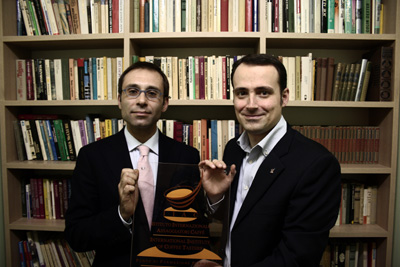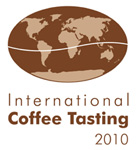Lessons under the green tree
by Carlo Odello
Trainer and member of the board of the International Institute of Coffee Tasters

The world of coffee shops in Italy is afflicted by a widespread lack of planning. A small number of coffee shop owners know their business and are able to plan and are joined by hordes of operators living hand to mouth. Although outside Italy the situation is not always at its best, it really depends on the country taken into account, you generally meet sharper operators who think in real terms of marketing.
GREENTREECaffè is one of these cases. Vittorio Ventura and Dana Hruba have created a chain of coffee shops in Bratislava; to be precise, five coffee shops in only two and a half years, in a very competitive market such as Bratislava. The Slovakian capital has only half a million inhabitants but is a remarkable tourist crossroads surrounded by Vienna, Prague and Budapest. This is why at least two other chains other than GREENTREECaffè exist, everyday playing “the coffee battle” in the city. It is obvious that the staff at GREENTREECaffè plays on Italian espresso and related products.
GREENTREECaffè is now the first Permanent Training Point of the International Institute of Coffee Tasters in Central Europe. The coffee shop in Venturska, with a splendid room with hundred-year-old vaults, within the last few days has entered into the International Institute of Coffee Taster’s network, bringing the number of the Permanent Training Points to 28 (four of which are outside of Italy: Stuttgart, Dneperpetrovsk, Tokyo and now Bratislava). To inaugurate the Institute new embassy, on Saturday 5th November a Espresso Italiano Tasting course was held to license new coffee tasters, which followed the course held last year by GREENTREECaffè.

Vittorio Ventura receives the plaque for the GREENTREECaffè’s new Permanent Training Point in Bratislava. Photos of the new PTP are available on our Facebook page.
 The third edition of International Coffee Tasting, the international coffee contest organized by the International Institute of Coffee Tasters, ended on October 27. For two days, 27 tasters from nine different countries (Italy, Japan, Poland, Slovakia, Slovenia, Sweden, Switzerland, Serbia, Germany) evaluated 121 coffees from Italy, Germany, Mexico, Poland, Slovenia, Spain, Switzerland, Thailand, and the USA.
The third edition of International Coffee Tasting, the international coffee contest organized by the International Institute of Coffee Tasters, ended on October 27. For two days, 27 tasters from nine different countries (Italy, Japan, Poland, Slovakia, Slovenia, Sweden, Switzerland, Serbia, Germany) evaluated 121 coffees from Italy, Germany, Mexico, Poland, Slovenia, Spain, Switzerland, Thailand, and the USA.

